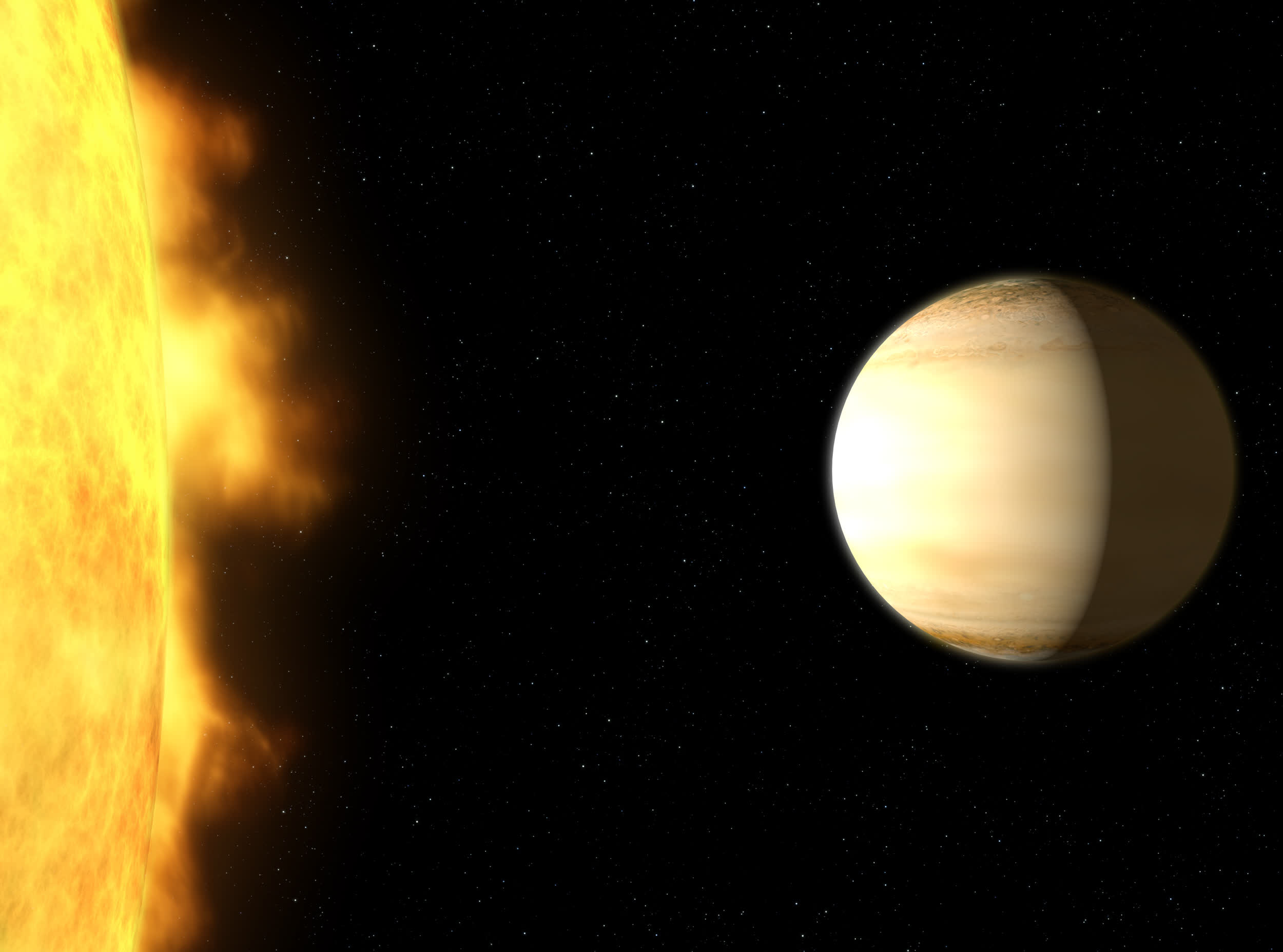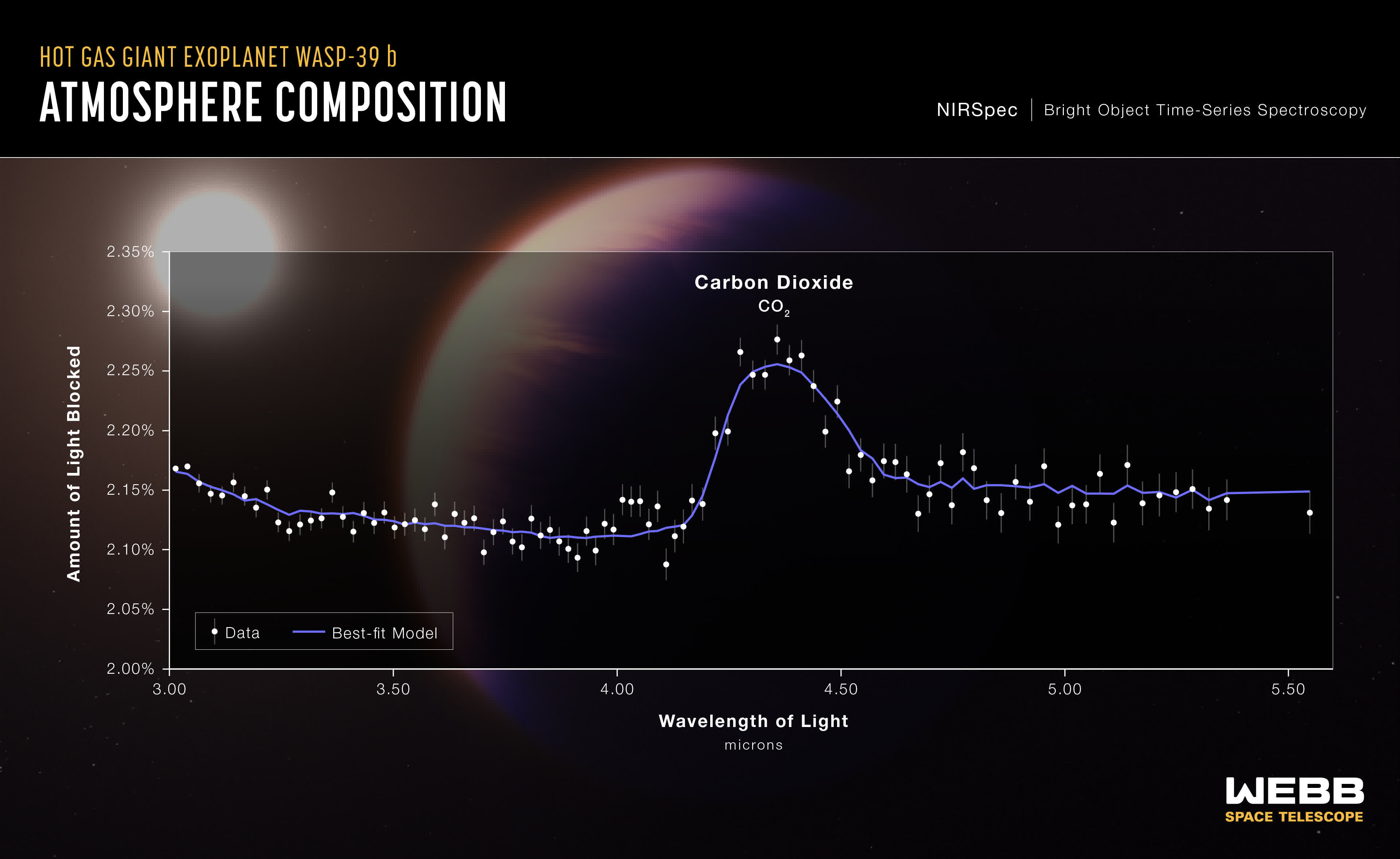

NASA detects carbon dioxide on a planet outside of our solar system for the firs...
source link: https://www.techspot.com/news/95782-nasa-detects-carbon-dioxide-planet-outside-our-solar.html
Go to the source link to view the article. You can view the picture content, updated content and better typesetting reading experience. If the link is broken, please click the button below to view the snapshot at that time.

NASA detects carbon dioxide on a planet outside of our solar system for the first time
James Webb Space Telescope finds carbon dioxide in exoplanet atmosphere
By Shawn Knight August 26, 2022, 2:37 PM
What just happened? The James Webb Space Telescope has detected the presence of carbon dioxide in the atmosphere of an exoplanet 700 light-years from Earth. The discovery marks the first time carbon dioxide has been observed on a planet outside of our solar system.
WASP-39 b is a gas giant with a mass roughly one-quarter that of Jupiter and a diameter 1.3 times greater than Jupiter. It is toasty, too, with a temperature of around 1,600 degrees Fahrenheit thanks in part to the fact that it orbits very close to its star – about one-eighth the distance between Mercury and the Sun, or around 4.5 million miles away.
Previous observations using NASA's Hubble and Spitzer space telescopes confirmed the presence of sodium, potassium and water vapor in the planet's atmosphere. Webb's Near-Infrared Spectrograph (NIRSpec) tool was used to observe WASP-39b as it passed in front of its star.
As the planet passes in front of the star, some of the light from the star is transmitted through its atmosphere. Different gases absorb different combinations of colors, and analyzing these changes across a spectrum of wavelengths allows researchers to determine exactly what a planet's atmosphere is comprised of.
"As soon as the data appeared on my screen, the whopping carbon dioxide feature grabbed me," said Zafar Rustamkulov, a graduate student at Johns Hopkins University and member of the JWST Transiting Exoplanet Community Early Release Science team. "It was a special moment, crossing an important threshold in exoplanet sciences."
It takes just over four Earth-days for WASP-39 b to orbit its star. These frequent transits make it an ideal candidate for transmission spectroscopy.
Natalie Batalha of the University of California at Santa Cruz, who leads the team, said detecting such a clear signal of carbon dioxide on WASP-39 b bodes well for the detection of atmospheres on smaller planets.
Data like this will help researchers better understand the origin of the planet and how it evolved. Mike Line of Arizona State University, another member of the research team, said that by measuring carbon dioxide specifically, they can determine the ratio of solid versus gaseous material that was used to form the planet.
Recommend
-
 43
43
Let's have a look at how to create a visualization that shows how CO2 concentrations evolved in the atmosphere. First, we fetched from the Earth System Research Laboratory
-
 11
11
Oxford researchers hope to convert carbon dioxide into jet fuel(Bloomberg Creative Photos/Bloomberg)By Dalvin Brown...
-
 6
6
Study: Global plant growth surging alongside carbon dioxide April 20, 2...
-
 6
6
Creating Methane From Captured Carbon Dioxide And The Future Of Carbon Capture There’s something intrinsically simple about the concept of carbon (CO2) capture: you simply have the CO2 molecul...
-
 9
9
January 17, 2022
-
 9
9
April 8, 2022 ...
-
 5
5
AdvertisementClimate ChangeEarth Hits Record Carbon Dioxide LevelsThe atmosphere now contains mor...
-
 3
3
June 10, 2022 ...
-
 8
8
Reduce Carbon Dioxide Emissions with Serverless and Kubernetes Native Java Jun 15, 2022...
-
 10
10
JWST detects carbon dioxide in atmosphere of exoplanet for first timeThe detection marks a new level of detail previously unmatched by other observatories. By
About Joyk
Aggregate valuable and interesting links.
Joyk means Joy of geeK
